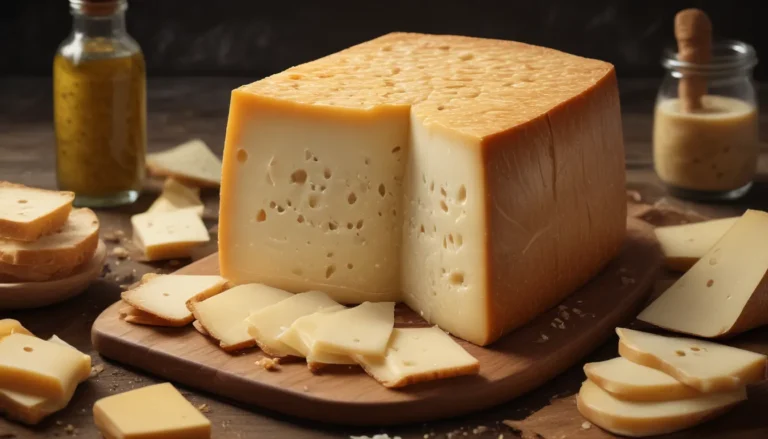The pictures in our articles might not always show exactly what the text is talking about. We use these images to make the article more interesting and eye-catching. They are there to add to the text, but not to replace it or show every detail.
Are you curious about the wonders of Kola? Whether you love indulging in a cold glass of Kola soda or relishing the flavor of Kola nuts in traditional dishes, Kola offers a rich history and unique characteristics that are worth exploring. In this article, we will uncover 11 captivating facts about Kola that will leave you fascinated and eager to learn more. From its origins in West Africa to its widespread popularity as a beverage ingredient, Kola has become a beloved staple in many cultures worldwide. So let's dive into this flavorful journey together and discover why Kola is truly a one-of-a-kind ingredient!
Exploring the World of Kola
The Origin Story of Kola Nuts
Kola nuts hail from the kola tree, scientifically known as Cola acuminata and Cola nitida. These trees are indigenous to the lush tropical rainforests of West Africa, particularly in countries like Nigeria and Ghana. Local tribes have cherished the stimulating properties of Kola nuts for centuries.
Unveiling the Caffeine Content
Kola nuts are renowned for their high caffeine content, containing approximately twice as much caffeine as coffee beans. This natural stimulant is widely used in energy drinks and dietary supplements, making Kola a popular choice for those seeking an energy boost.
The Health Benefits of Kola Nuts
Traditional Medicinal Wisdom
In traditional African medicine, Kola nuts have been treasured for their potential health benefits. Believed to possess anti-inflammatory properties, aid in digestion, and boost energy levels, Kola nuts have been valued for their role in promoting vitality and community unity. Some cultures also view Kola nuts as an aphrodisiac.
A Look at Appearance and Flavor
Kola nuts are small, round, and feature a dark brown exterior. Upon peeling, they reveal white or cream-colored seeds with a slightly bitter and earthy flavor profile, complemented by a hint of sweetness.
Embracing Kola in Culinary Delights
The Role of Kola in Culinary Creations
Kola nuts play a prominent role in the creation of soft drinks, particularly cola beverages. Beyond sodas, they are also used to flavor an array of food and beverages, including liqueurs, candies, and chocolates, adding a unique touch to culinary delights.
Unpacking the Cultural Significance
In many African communities, Kola nuts hold significant cultural value. Often exchanged as a symbol of hospitality, friendship, and goodwill during social gatherings and ceremonies, sharing Kola nuts symbolizes unity and respect among individuals.
A Glimpse into Kola’s Influence
Kola Nuts and Coca-Cola
One of the most famous applications of Kola nuts lies in the creation of the iconic cola beverage, Coca-Cola. Originally, Coca-Cola contained extracts from Kola nuts, contributing to its distinctive flavor and energizing properties.
Traditional Cola Recipes Featuring Kola Nuts
Historically, Kola nuts were a crucial component in traditional cola recipes. These recipes often combined Kola nuts with spices and other natural ingredients to formulate a refreshing and invigorating beverage.
A Tapestry of Rituals and Healing
Social and Cultural Rituals
In various African cultures, Kola nuts are integrated into social and cultural rituals. These nuts are utilized in ceremonies to bless marriages, births, funerals, and invoke the presence of ancestors, highlighting their symbolic significance.
Harnessing the Healing Potential
Kola nuts are also valued for their potential healing properties. In traditional African medicine, these nuts are believed to combat fatigue, enhance mental clarity, and promote overall well-being, showcasing their multifaceted advantages.
Delving Deeper into Symbolism
The Symbolic Representation
Kola nuts embody unity, strength, and vitality, serving as a representation of communal interconnectedness. They stand as a reminder of the significance of tradition and cultural heritage within communities.
A Final Thought on Kola
In conclusion, the journey through these 11 Kola facts offers a glimpse into the deep-rooted history, cultural relevance, and nutritional benefits of this iconic ingredient. From its medicinal origins in Africa to its global appeal today, Kola continues to enchant taste buds worldwide with its refreshing taste and potential health perks.
FAQs: Answering Your Burning Questions on Kola
-
What is kola?
Kola is a type of tropical tree native to Africa, with its seeds, known as kola nuts, serving as the foundation for popular carbonated soft drinks like cola. -
Is kola nut safe to consume?
Yes, kola nut is generally safe for consumption in moderate amounts. However, individuals sensitive to caffeine should exercise moderation when consuming it. -
What are some potential health benefits of kola nut?
Kola nut is believed to offer several health benefits, including increased energy levels, improved digestion, and enhanced cognitive function. -
Can kola nut be used to treat certain medical conditions?
In some cultures, kola nut has been traditionally used to treat conditions such as digestive disorders, headaches, and asthma. Consulting with a healthcare professional is recommended before using it for medicinal purposes. -
Does kola nut have any side effects?
While kola nut is safe for most individuals, excessive consumption can lead to side effects like increased heart rate, jitteriness, and difficulty sleeping due to its caffeine content. -
Can kola nut be consumed by pregnant or breastfeeding women?
It is advisable for pregnant or breastfeeding women to consult with a healthcare professional before consuming kola nut due to its caffeine content and potential effects on both the mother and the baby. -
Are there caffeine-free alternatives to kola nut?
Yes, caffeine-free alternatives like cola drinks labeled as caffeine-free or herbal options that mimic kola's flavor without the caffeine content are available in the market. -
Can kola nut be used in cooking or baking?
Kola nut can indeed be used in various recipes to impart a distinctive flavor and texture. Moderation and consideration of its caffeine content are key when incorporating it into culinary creations. -
Is kola nut a sustainable crop?
Kola nut is considered a sustainable crop due to its native origins in Africa and longstanding cultivation practices. Responsible farming methods are vital to maintaining its sustainability. -
Can kola nut interact with medications?
Kola nut may interact with certain medications such as those for blood pressure, antidepressants, and stimulants. Consulting with a healthcare professional is important if you are taking any medications before consuming kola nut. -
Can kola nut be enjoyed by children?
Given its caffeine content, it is recommended to avoid giving kola nut to children and opt for caffeine-free alternatives to ensure their well-being.
Immerse yourself in the world of Kola as we uncover its hidden gems, from its intricate history to its diverse cultural applications. Join us on this enlightening journey and savor the essence of Kola's unique presence in our world.






